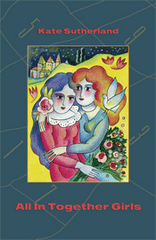It was a huge, castellated structure of brick, with a pillared entrance porch, high, arched Georgian windows, and towers and turrets wherever a tower or turret could be wedged in. It was surrounded by a high iron fence with wrought-iron gates.
There was a time when “Gay Street was the last word in streets and 60 Gay […] one of the finest ‘mansions’ in Toronto.” But by the 1930s, Gay Street has fallen out of fashion, barely qualifying as “shabby genteel.” Sixty Gay is flanked on one side by a boarding house, and on the other by “the unceasing clatter and clang of Bloor, which was especially noisy and busy where Gay Street joined it.” The old Adams house that once stood on the opposite corner has been torn down and a “new white-and-red filling station built in its place.” No one can understand why Jane’s grandmother persists in living at 60 Gay when she’s got “oodles of money and could afford to buy one of those lovely new houses in Forest Hill or in the Kingsway.”
When I first moved to Toronto I lived in the Annex, not far off Bloor. It occurred to me that Gay Street could have been modelled after one of the Annex streets that runs up to Bloor and I confess that I kept an eye out for those wrought-iron gates and that white-and-red filling station as I explored the neighbourhood. I never found a likely looking corner, but even if Gay Street was modelled after a real street, both the filling station and Jane’s grandmother’s forbidding ‘mansion’ might well have disappeared by now.
A couple of years ago on a visit to PEI, I made a similar fruitless search for the lighthouse that I’d read had been the model for Captain Jim’s light in Anne’s House of Dreams. And those of you who are regular readers of this blog know that I recently took great pleasure in following in the footsteps of Miss Jean Brodie and her girls across the Middle Meadow Walk and up into Edinburgh’s Old Town.
What is it that prompts me to seek out the actual places in which favourite fictions are set? I’m not one of those readers that digs about in literary biographies hoping to find that a cherished novel is based on a true story. I’m perfectly content with the fictional status of my fiction. Yet somehow it’s meaningful to me to stand in the actual place where the thing that didn’t happen happened.
Perhaps it has to do with wanting to more fully enter into a book that has captivated me. When an author aims for and achieves verisimilitude, although I know that the events of the book never happened I feel as if they did. Particularly with childhood favourites, I may even feel as if I saw them happen or as if I took part in them myself. Entering into the physical space where the book is set is a literal way of inhabiting the story, and the experience may, when one turns to the book again, serve to extend or heighten what John Gardner calls “the fictional dream.”

6 comments:
Did you hear about the fictional map of New York City? It's such a great endeavor -- to map out as many of the important places in fiction as possible.
I loved LM Montgomery growing up, but I never read Jane of Lantern Hill -- perhaps I should.
I hadn't heard about the fictional map of NYC. It sounds very cool!
I think you are right about wanting to be more involved with a favorite book. LA has a huge fictional landscape. I don't go crazy looking for litscapes, but when I find out about them they are fun to visit and dream at.
Nice post, Kate.
Hello Kate
Thanks for producing a great blog, which I've just today discovered. (Oh no, another blog for me to check on a regular basis instead of opening Word and getting some writing done.) Good links, good commentary, good reading ideas.
Booklad,
I've never heard the term "litscapes" before. I like it.
Leona,
Thanks! I know what you mean about the wealth of blogs out there to distract from one's own writing. I comfort myself with the thought (rationalization?) that there are many less edifying things that I could be distracting myself with...
Kate, this blog may be of interest to you. It's called 'Imagining Toronto: Intersections of literature and place in the Toronto region"
http://imaginingtoronto.blogspot.com/
Post a Comment